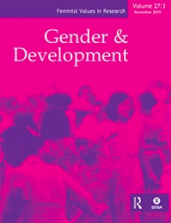When women enter male-dominated territories in the platform economy: gender inequalities among drivers and riders in Argentina

Overview
Platform labour, especially when it comes to its flexible schedules, may represent a job insertion possibility and a source of income for many women. However, such opportunities are not exempted from gender bias. This article inspects how the expansion of the platform economy affects gender inequalities by focusing on two platform occupations: ride-hailing and delivery services. First, it investigates gender gaps in terms of working hours and earnings via linear regression as well as their determinants. Second, qualitative data further deepen the analysis of female riders’ and drivers’ experience in male-dominated territories, exploring how it is perceived and endured by workers. This paper is based on qualitative and quantitative data collected in the metropolitan area of Buenos Aires between 2019 and 2021. The analysis suggests that the gender-differentiated economic performance of riders and drivers is associated with demographic and on-the-job characteristics, implying restrictions for women workers in terms of how long, where, and when they can work. Algorithmic management further reinforces these initial female disadvantages, through tools such as scoring systems, dynamic pricing, and selective work allocation. The article concludes by providing some insights into a gender-transformative approach to the future regulation of these activities.
Additional details
Author(s)
Publisher(s)
Editor(s)
DOI
10.1080/13552074.2022.2117931How to cite this resource
Citation styles vary so we recommend you check what is appropriate for your context. You may choose to cite Oxfam resources as follows:
Author(s)/Editor(s). (Year of publication). Title and sub-title. Place of publication: name of publisher. DOI (where available). URL
Our FAQs page has some examples of this approach.
Private Sector Rapid Care Analysis Toolkit

Navigating the City: Gendered work experiences in urban spaces


